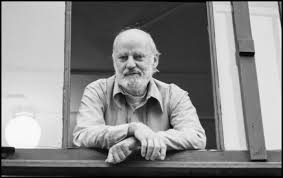Dear George,
Wednesday, December 18, 2024
A MODERN CHRISTMAS FABLE
Dear George,
Thursday, November 28, 2024
GIVING THANKS
Friday, November 15, 2024
A SCARY HALLOWEEN STORY
Thursday, November 7, 2024
TEN THOUGHTS I HAD THIS WEEK
Dear George,
Saturday, November 2, 2024
A SWIFTIE EXTRAVAGANZA
Dear George,
Monday, October 21, 2024
A ROLLER COASTER TRIP
Dear George,
Thursday, September 26, 2024
A CHAT WITH GEMINI
Dear George,
Tuesday, September 17, 2024
THE BEAT POETS
Dear George,
Sunday, July 21, 2024
THE REMARKABLE NUMBER 87
Dear George,
Saturday, July 13, 2024
CLUTTER
Dear George,
Saturday, June 29, 2024
PLACES
Dear George,
In many ways, we are products of the places in which we exist. Our environments shape our experiences, opportunities, activities, outcomes. Having grown up in a rural area of Michigan’s Upper Peninsula, I’m a different person than if I’d spent those same years in New York City or Hoboken. Here are places that have been most important in my life.
MENOMINEE, MICHIGAN (1937-1955)
I was born in Menominee in the midst of the Great Depression and lived there until I left for college 18 years later. Menominee was a great place for kids to grow up. Bordered on the south by the Menominee River and on the east by Green Bay, we spent much of the warmer months in or on the water. My family moved from town to the country when I was 9, and the forest became my and my siblings’ playground. I developed a love for camping that persists to the present day. Menominee had all the virtues of a small town. The people were kind, generous, and neighborly. My parents left their beloved home to their kids, and we continue to visit to this day.
YELLOW SPRINGS (1955-1960)
I went to college in Yellow Springs by mistake. An Antioch alumnus became so annoyed with my mother’s questions about fraternities and sororities that he told her that Antioch College had formal balls every weekend and that owning a tuxedo was mandatory. Antioch, of course, was home to beatniks and Marxists, far afield from my staunch Republican parents. As students we came to view Yellow Springs as a small piece of paradise. It was home to the Little Art Theater where we watched and tried to make sense of films by Bergman, Fellini, and Truffaut. Yellow Springs had two bars, Ye Olde Trail Tavern on the main drag which catered to preppies and Com’s, a black-owned bar where Com tended bar to black clientele on the upper level and his wife Goldie waitressed and baked pizza for college students on the lower level. We spent many hours at Com’s, drinking 3.2 beer and debating the meaning of life.
NEW YORK CITY (1957-1958)
I had my second co-op job in New York City, and the city blew my mind. The skyscrapers, the crowds, the ethnic diversity, the cultural attractions. I decided at age 20 that this was the only place I wanted to be for the rest of my life. Steve Schwerner, one of my college friends who had a jazz show on our college radio station, recruited us to go to Greenwich Village jazz clubs on weekends. I spent many wonderful nights listening to Thelonius Monk at the Five Spot Cafe, as well as enjoying Charlie Mingus at the White Horse Inn, John Coltrane at the Village Vanguard, and a host of others. We still enjoy visits to our in-laws in Manhattan now and then.
SAN FRANCISCO (summer 1959)
In the summer before my final year of college I drove out to San Francisco with the explicit goal of deciding whether or not I wanted to pursue fiction writing as my life career. I found a job as a dishwasher at an upscale boarding house in Pacific Heights which didn’’t pay money but did offer room and board. I spent a lot of time in North Beach, home turf of Jack Kerouac and Lawrence Ferlinghetti, and worked on writing in the reading room of the San Francisco public library. home to my favorite author, William Saroyan. I submitted 17 short stories for publication that summer, mostly to detective and cowboy magazines. I got a rejection form letter for every one which effectively ended my aspirations for a writing career.
ANN ARBOR (1960-66)
We moved to Ann Arbor for graduate school in September, 1960. Coming from a small liberal arts school, we were very skeptical about this Big Ten public university. However, as students, we got free tickets to Michigan’s football game, and, after the first game, we never missed another one. While we’d been Yellow Springs devotees, Ann Arbor was a fantastic college town with multiple book stores, restaurants, art galleries, and movie theaters. We realized we’d been totally ethnocentric as undergraduates.
CINCINNATI (1966-present)
We moved to Cincinnati in 1966, first taking a townhouse at Williamsburg Apartments on Galbraith Road. Williamsburg was over-run with young P&G executives and there was an annoying commute to the University, so we moved to a first-floor apartment in a former beer baron’s mansion on Clifton Avenue. The fanciest place we’ve ever lived. We were initially taken aback by the right-wing slant of the local newspaper and worried about the city’s conservatism, but we soon became enamored with the Cincinnati’s restaurants, cultural attractions, wonderful park system, and many enjoyable neighborhoods. After more than half a century, we’re pretty much natives.
NEW ORLEANS (1990’s-present)
Our son J and daughter-in-law K moved to New Orleans in the early 1990’s, and we’ve visited them once or twice a year ever since. New Orleans, in my judgment, is tourist heaven. It has wonderful restaurants and an energetic music nightlife that is accessible to oldies like us. We spend lots of time in the French Quarter, visiting art galleries and antique stores, eating beignets, and people-watching in Jackson Square. The city’s history is told in several museums, the World War II Museum is one of the nation’s finest, the parks are great, and we love the New Orleans Museum of Art with its sculpture garden and the Ogden Museum of Southern Art. Most of all we love being together with our family who always make us feel welcome.
There are many other places that could be included in this list: Santa Cruz CA, Dixon CA, Seattle, Philadelphia, Chicago, Milwaukee, Beach Haven NJ, Atlantic City, Miami Beach. It strikes me that people’s lists of personal places are probably quite unique. In doing this task, I realize that I have positive feelings toward every one of these towns and cities, wouldn’t change a thing, and owe them all a big thank you for what they’ve given to us and to many others.
Love,
Dave
Sunday, June 9, 2024
DOMESTIC TERRORS
Dear George,
Saturday, May 18, 2024
DOGS OF OUR DAYS
Friday, May 10, 2024
CUTTING TIES: A NASTY BUSINESS
Dear George,
I have a huge decision to make. When I took a job as a social psychologist at the university I held a joint appointment and had separate offices in Psychology and Sociology. I retired some forty plus years later and moved out of my Psychology office. However, Sociology had access to some vacant space in their high-rise building, and they offered me a new office as an emeritus faculty member. Though the department was on the tenth floor and my new office would be on the thirteenth floor, it suited my purposes and I took them up on it. I like having a place to work other than home, and having an office at the university made my transition into retirement much easier. I went into work regularly — I just didn’t get paid. None of the other retired faculty were interested in an office, so I got to have my own space. Perhaps the biggest attraction for me was that I didn’t have to dispose of the five large file cabinets full of stuff that I’d accumulated throughout my career. Tons of lecture notes, data and records from research projects, published and unpublished papers, assorted graduate student files, miscellaneous angry memos, and my library of a couple hundred books. I’ve used my emeritus office mainly for writing — most recently for poetry, OLLI writing classes, stories for my blog, and papers for my writers’ group. While I had occasional contact with former colleagues on the tenth floor when I first retired, that’s declined over the years, and my visits have become less frequent and more solitary.
Recently I got an email from the Sociology department head saying that in August the department will move to a different building on campus. The head said that I could have office space in the new location though it would be shared with several adjunct faculty members. She added the adjuncts spend little time at the office. I went over and looked at the space. It’s much smaller than my current office, with room for one desk and one or two file cabinets at best. It didn’t seem to me that two people could use it at the same time. This office will be right in the middle of the department, allowing for more potential contact with faculty and staff, though I’m not attracted to that. Now I am pondering what to do. It’s a quandary. The most clearcut option is to discontinue office space on campus, discard all the stuff I’ve accumulated over the decades, and move a few things home to our crowded attic. I can write poetry at home just as well as on campus. That choice, however, would close down one of the main places outside of home in which I spend time. Alternatively I could move a few things to the new office and see whether I want to spend time there. Part of me says it’s better to have crummy office space on campus than no office at all. I waver back and forth on a daily basis. I have started to throw things away, and I must say it’s been brutal so far. Fortunately I have some time available to make a final decision.
Love,
Dave
Sunday, April 21, 2024
NIL: A Nightmare for College Sports?
Dear George,





























































































































































































